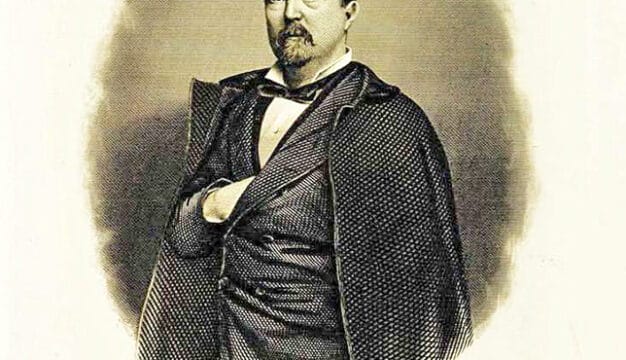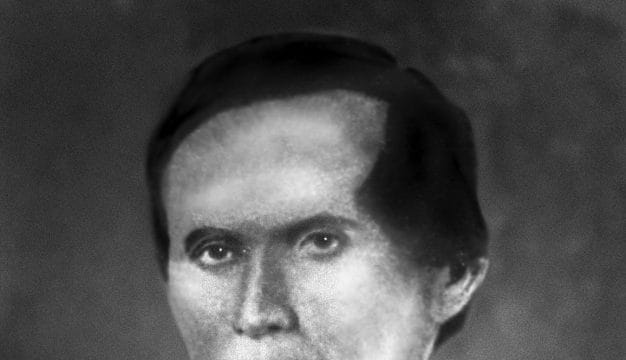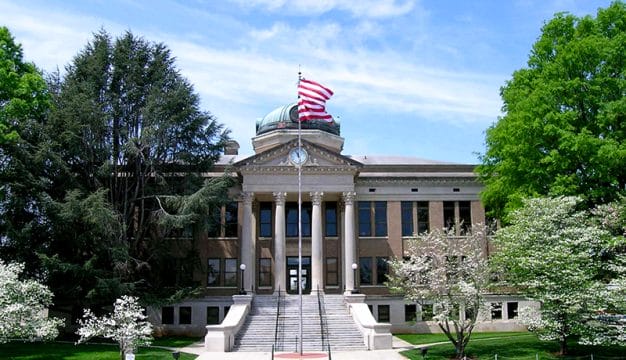Black Hospital Movement in Alabama
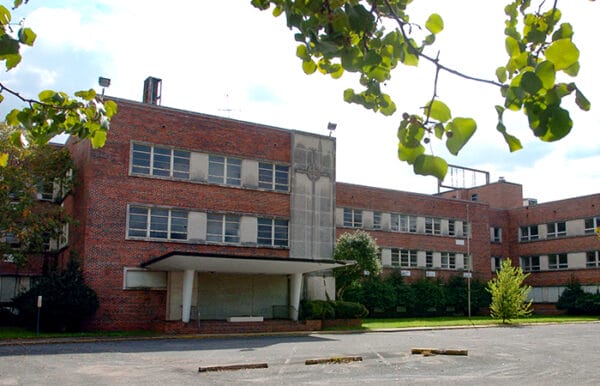 Holy Family Hospital
In Alabama, as in the rest of the segregated Jim Crow South, African Americans were barred from working in or being treated at many hospitals. These restrictions spawned what became known as the Black Hospital Movement in the late nineteenth century. During the first half of the twentieth century, philanthropic and church-based organizations and individuals worked to establish private clinics and hospitals—as well as a number of nursing schools—for African Americans throughout the nation. In Alabama, more than 25 community-supported black hospitals were established, including Hale Infirmary in Montgomery and Holy Family Hospital in Ensley. These hospitals allowed African American physicians to practice medicine and treat patients in medically appropriate settings, and they offered patients a respite from the often undignified treatment they received at white-owned hospitals. The introduction of federal health care and civil rights legislation providing funding and requiring integration ultimately led to the demise of the black hospitals.
Holy Family Hospital
In Alabama, as in the rest of the segregated Jim Crow South, African Americans were barred from working in or being treated at many hospitals. These restrictions spawned what became known as the Black Hospital Movement in the late nineteenth century. During the first half of the twentieth century, philanthropic and church-based organizations and individuals worked to establish private clinics and hospitals—as well as a number of nursing schools—for African Americans throughout the nation. In Alabama, more than 25 community-supported black hospitals were established, including Hale Infirmary in Montgomery and Holy Family Hospital in Ensley. These hospitals allowed African American physicians to practice medicine and treat patients in medically appropriate settings, and they offered patients a respite from the often undignified treatment they received at white-owned hospitals. The introduction of federal health care and civil rights legislation providing funding and requiring integration ultimately led to the demise of the black hospitals.
In 1892, Tuskegee Institute opened the first hospital for African Americans in Alabama, the Tuskegee Institute Hospital and Nurse Training School, to provide care for the school’s faculty and students and to train black nurses. The hospital expanded after physician John A. Kenney was appointed director in 1902 and began serving the surrounding African American community. It was renamed the John A. Andrew Memorial Hospital, following a donation in honor of Andrew, who was governor of Massachusetts, and became a center for the postgraduate training of black physicians in the Deep South.
Although most public hospitals made some provisions for black patients—on a segregated basis—few institutions gave black physicians privileges in their facilities. Virtually all of these hospitals were run by white doctors, and many resisted adding African Americans to their staffs, as they were often in competition with them for patients. Moreover, black patients often found themselves subject to discrimination from white doctors and nurses at public hospitals and were segregated into basement wards at most facilities. Even public hospitals that catered mostly, or even exclusively, to black patients regularly refused to allow black doctors to use their facilities.
As a result of this exclusion and discrimination, black communities worked with northern philanthropists, such as the Rosenwald Fund, and religious groups and bodies, such as the Catholic Church, to develop their own hospital facilities. Most were small, privately held institutions, such as the Cottage Home Infirmary (1900) in Decatur and Burwell’s Infirmary (1907) in Selma as well as the aforementioned Hale Infirmary and Holy Family Hospital. These facilities allowed black doctors to perform surgery and other procedures that required some hospital care, and they allowed African Americans to be treated by their own physicians. Although they generally lacked the modern amenities of larger public hospitals, black-owned clinics and hospitals were often preferred by many African American patients, who resented the degradation of segregation in white-run hospitals. These facilities were often established with the aid of local people and became a source of pride to their communities.
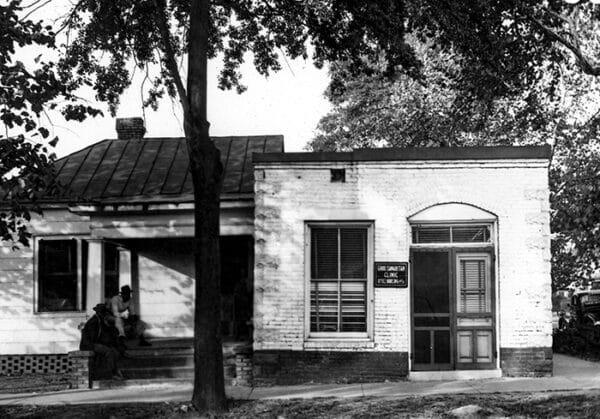 Good Samaritan Clinic
In these early decades of the twentieth century, several black hospitals, including the Fraternal Hospital (1919) in Montgomery, the Good Samaritan Hospital (1922) founded by the Edmundite Missions in Selma, and the Tuggle Institute (1923) in Birmingham, were founded by other black universities as well as churches and fraternal societies. Following World War I, the federal government embarked on the construction of a number of hospitals for disabled veterans, including one for African American soldiers. Tuskegee Institute donated 300 acres of land for the 600-bed Veterans’ Hospital, but as the 1923 opening date drew near, the Ku Klux Klan mounted protests in opposition to the hospital. In order to diffuse the situation, the Veterans’ Bureau stated that the hospital would open with a staff of all-white nurses and doctors. The decision outraged Tuskegee president Robert R. Moton, who had consented to the hospital with the understanding that it would be staffed—at least in part—by black physicians. Moton wrote U.S. president Warren G. Harding asking him to allow black doctors at least to have an opportunity to qualify for staff positions at the hospital, and the National Association for the Advancement of Colored People campaigned to expose the hypocrisy of segregationists’ demands that white doctors and nurses minister to black veterans. As a result of these protests, in November 1923 four black physicians began work at the Tuskegee Veterans’ Hospital, despite continued threats by the Klan. Opposition eventually dissipated and, by the end of 1924, black physicians quietly gained control of the facility under the direction of Joseph Ward.
Good Samaritan Clinic
In these early decades of the twentieth century, several black hospitals, including the Fraternal Hospital (1919) in Montgomery, the Good Samaritan Hospital (1922) founded by the Edmundite Missions in Selma, and the Tuggle Institute (1923) in Birmingham, were founded by other black universities as well as churches and fraternal societies. Following World War I, the federal government embarked on the construction of a number of hospitals for disabled veterans, including one for African American soldiers. Tuskegee Institute donated 300 acres of land for the 600-bed Veterans’ Hospital, but as the 1923 opening date drew near, the Ku Klux Klan mounted protests in opposition to the hospital. In order to diffuse the situation, the Veterans’ Bureau stated that the hospital would open with a staff of all-white nurses and doctors. The decision outraged Tuskegee president Robert R. Moton, who had consented to the hospital with the understanding that it would be staffed—at least in part—by black physicians. Moton wrote U.S. president Warren G. Harding asking him to allow black doctors at least to have an opportunity to qualify for staff positions at the hospital, and the National Association for the Advancement of Colored People campaigned to expose the hypocrisy of segregationists’ demands that white doctors and nurses minister to black veterans. As a result of these protests, in November 1923 four black physicians began work at the Tuskegee Veterans’ Hospital, despite continued threats by the Klan. Opposition eventually dissipated and, by the end of 1924, black physicians quietly gained control of the facility under the direction of Joseph Ward.
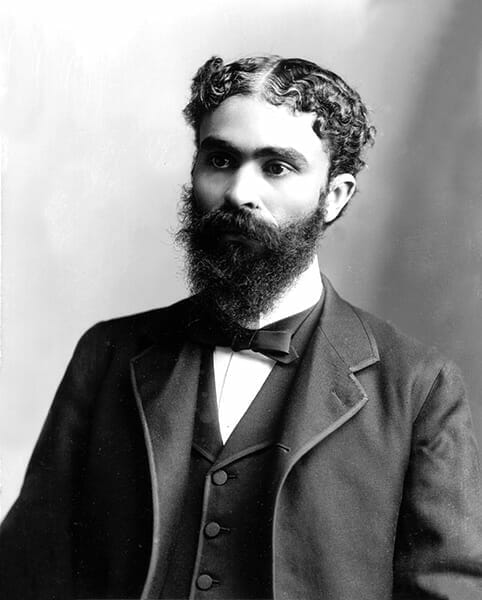 Thomas N. Harris
During the 1930s and 1940s, black physicians in Mobile treated patients at two private facilities established by physicians T. N. Harris and John Taylor, respectively. Catholic religious orders also established the Blessed Martin de Porres Hospital (1941) in Mobile for black patients, and founded several other hospitals in the state, including Holy Family Hospital in Ensley in 1943 and the City of St. Jude Hospital for Negroes in Montgomery in 1949.
Thomas N. Harris
During the 1930s and 1940s, black physicians in Mobile treated patients at two private facilities established by physicians T. N. Harris and John Taylor, respectively. Catholic religious orders also established the Blessed Martin de Porres Hospital (1941) in Mobile for black patients, and founded several other hospitals in the state, including Holy Family Hospital in Ensley in 1943 and the City of St. Jude Hospital for Negroes in Montgomery in 1949.
During the 1940s and 1950s, the federal government greatly expanded its involvement in hospital care with the passage of the Hospital Survey and Construction Act, which provided federal funding for the construction, expansion, and renovation of public and nonprofit hospitals. Co-authored by Alabama senator Lister Hill, and popularly known as the Hill-Burton Act, the 1946 law contained a nondiscrimination clause that required all federally funded hospitals to provide service “without discrimination on account of race, creed, or color.” But the legislation also included a loophole that allowed states that already had separate hospital facilities to ignore the nondiscrimination clause as long as hospital facilities “of like quality” were provided for black citizens. That provision was struck down by the U.S. Supreme Court in 1963.
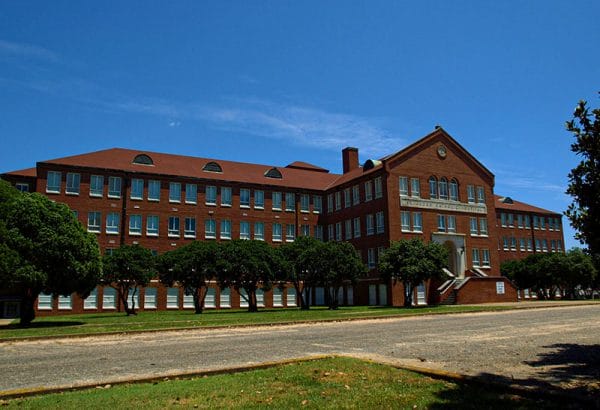 Hospital at City of St. Jude
The Hill-Burton Act had a significant impact on black hospitals throughout the South. In Alabama, three black hospitals in Montgomery, Mobile, and Birmingham received Hill-Burton funds, greatly increasing the number of beds and the level of care received by patients in these facilities. As the civil rights movement took hold across the South in the 1950s and 1960s, a combination of federal policies and lawsuits eventually brought about the integration of Alabama’s hospitals. Along with the Civil Rights Act of 1964, a major incentive for southern hospitals to integrate was the passage of Medicare legislation in 1965. In order to qualify for Medicare funding, hospitals were required to abide by the Civil Rights Act, which prohibited the federal government from funding any institution that discriminated on the basis of race, creed, or national origin.
Hospital at City of St. Jude
The Hill-Burton Act had a significant impact on black hospitals throughout the South. In Alabama, three black hospitals in Montgomery, Mobile, and Birmingham received Hill-Burton funds, greatly increasing the number of beds and the level of care received by patients in these facilities. As the civil rights movement took hold across the South in the 1950s and 1960s, a combination of federal policies and lawsuits eventually brought about the integration of Alabama’s hospitals. Along with the Civil Rights Act of 1964, a major incentive for southern hospitals to integrate was the passage of Medicare legislation in 1965. In order to qualify for Medicare funding, hospitals were required to abide by the Civil Rights Act, which prohibited the federal government from funding any institution that discriminated on the basis of race, creed, or national origin.
The South’s all-black hospitals were a casualty of the new integrated hospital facilities that developed in the decades following the Hill-Burton Act. As almost none of the older all-black hospitals qualified for federal funding, their days were numbered. Inadequately funded, staffed, and equipped, they could not survive the competition from the new modern hospitals, which opened their doors to black patients and physicians alike in the wake of the civil rights movement. No longer confined to segregated basement wards and second-class treatment, black patients began patronizing integrated facilities. With access to both modern facilities and their patients, most black physicians also no longer had any incentive to build or operate their own small clinics. By the 1980s, most small black hospitals could no longer compete in the new, integrated South, and even the larger, better financed black hospitals eventually closed. In 1987 the era of black hospitals in Alabama ended with the closure of Tuskegee’s century-old Andrew Hospital, the last black hospital in the state.
Further Reading
- Gamble, Vanessa Northington. Making a Place for Ourselves: The Black Hospital Movement, 1920-1945. New York and Oxford: Oxford University Press, 1995.
- Morais, Herbert. The History of the Afro-American in Medicine. Cornwell Heights, Penn.: The Publishers Agency, 1978.
- Rice, Mitchell F. and Woodrow Jones Jr. Public Policy and the Black Hospital. Westport and London: Greenwood Press, 1994.
- Ward, Thomas J. Jr. Black Physicians in the Jim Crow South. Fayetteville: University of Arkansas Press, 2003.
